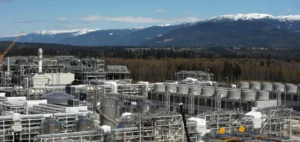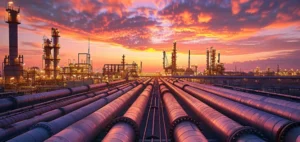Ukraine’s announcement that it will not renew its gas transit agreement with Russia beyond 2024 is reconfiguring Europe’s gas supply.
This contract, signed in 2019 between Gazprom and the Ukrainian companies Naftogaz and GTSOU, sets minimum transit volumes for Russian gas until December 31, 2024.
With the end of this transit, gas flows through Ukraine, already reduced by two-thirds since 2021, will cease altogether, forcing importers to diversify their sources.
In 2023, gas transported via Ukraine still accounted for almost 50% of total Russian gas exports to Europe.
Ukraine’s infrastructure has played a key role for European importers, but geopolitics and efforts to reduce energy dependence on Russia are now changing this balance.
The closure of this corridor will mainly affect Slovakia, Austria, Italy and Hungary, which still rely heavily on this pipeline for their supplies.
European importers adapt
The end of this transit is forcing European countries to adjust their supplies.
Slovakia, with 69% dependence on Russian gas by 2023, will have to consider new sources.
Austria, with around 60% of its gas imports coming from Russia, is in a similar situation.
These countries, geographically dependent on Russian gas flows, are faced with crucial strategic choices to secure their energy needs.
Alternatives are already being studied.
Italy, for example, is turning to Algeria to boost its natural gas imports.
However, these new sources require the adaptation of existing infrastructures and the securing of new supply contracts.
At the same time, Ukraine is discussing with Azerbaijan the possibility of transporting Azerbaijani gas to Europe via its own infrastructure.
This option, if it materializes, could partially compensate for the missing volume of Russian gas, but it depends on the ability of the parties involved to find common ground.
Reconfiguring gas routes
With the closure of the Ukrainian route, other supply routes are gaining in importance.
The TurkStream pipeline, which links Russia to Turkey and extends to Bulgaria, Serbia and Hungary, is becoming a preferred option.
Nevertheless, its current capacity remains limited and requires investment to increase flows.
Russia’s strategy, centered on the creation of a gas hub in Turkey, aims to secure its market share while bypassing Ukraine.
Gazprom, already affected by the reduction in European imports, anticipates a further drop in revenues, estimated at 5 billion euros a year.
This loss, representing around 6% of sales, is prompting the company to review its strategic orientations.
The drop in export volumes via Ukraine is increasing pressure on the European market to secure new sources of energy, away from Russian influence.
Financial stakes for Kiev and Gazprom
For Ukraine, the end of transit represents a significant loss of revenue, estimated at 720 million euros a year, affecting public finances and investment in the gas sector.
Gas transit was an important source of funding for the maintenance of national infrastructures, which are now in need of new resources.
The geopolitical context is forcing energy players to adjust their strategies.
While Europe seeks to reduce its dependence on Russian hydrocarbons, Russia is redirecting its exports towards new markets, notably in Asia.
The necessary adjustments in the European gas sector could accelerate the use of long-term contracts with new suppliers, and strengthen energy resilience in the face of geopolitical turbulence.





















